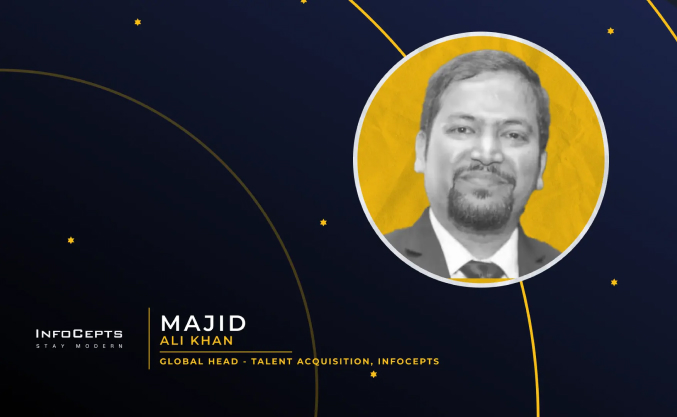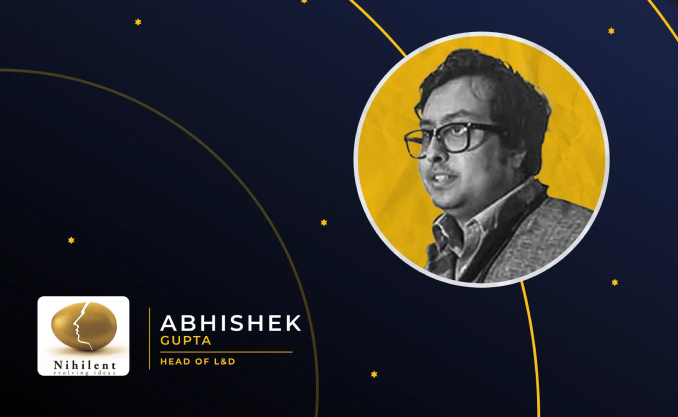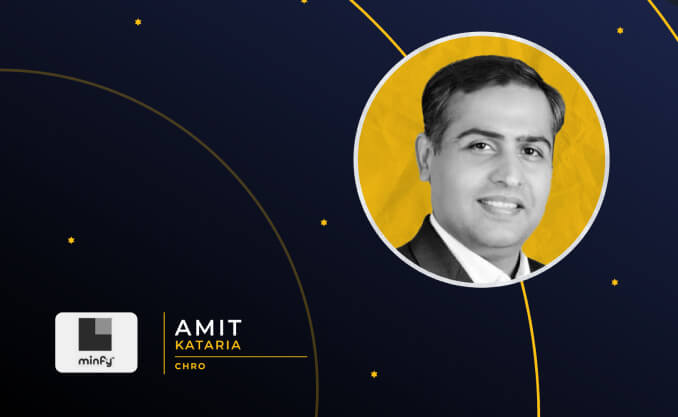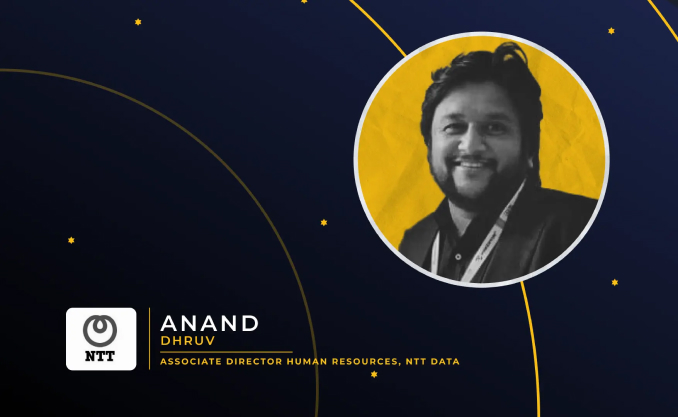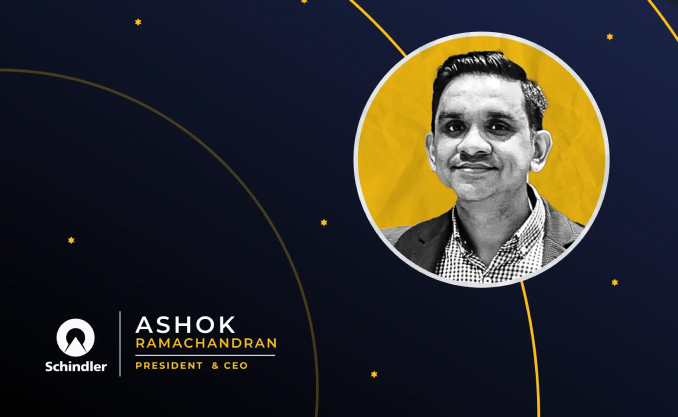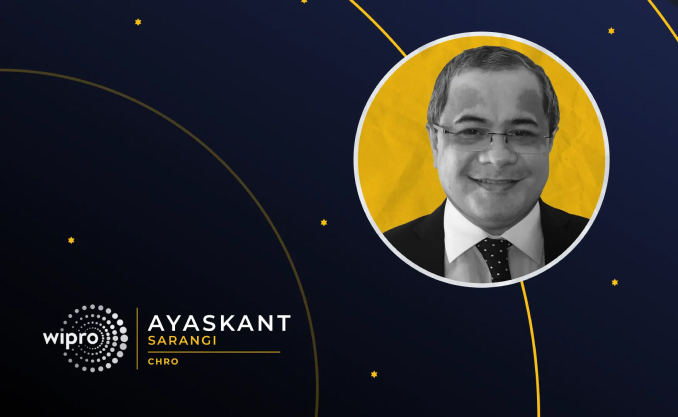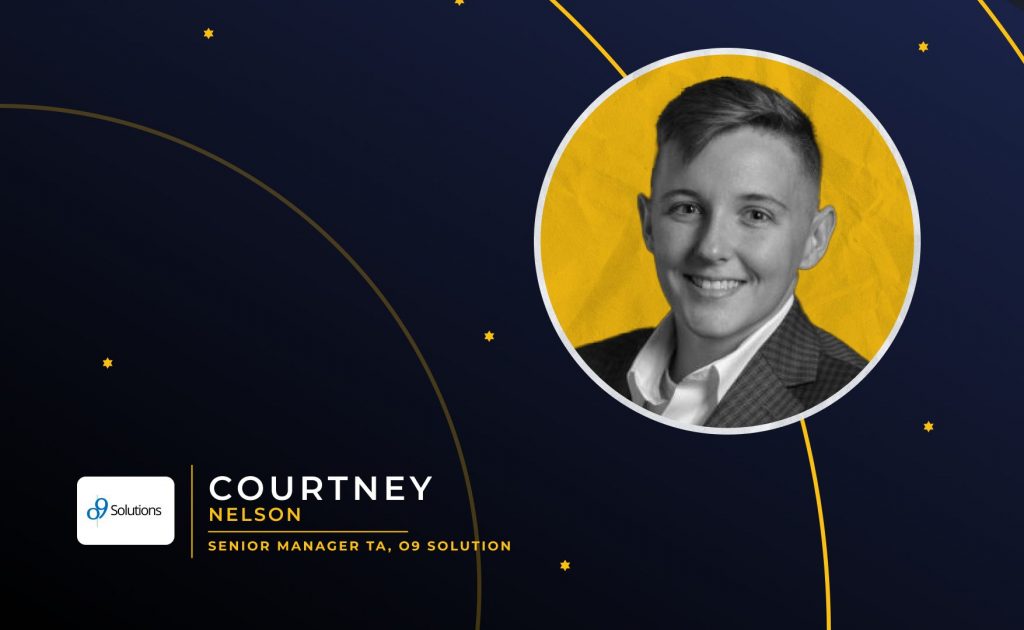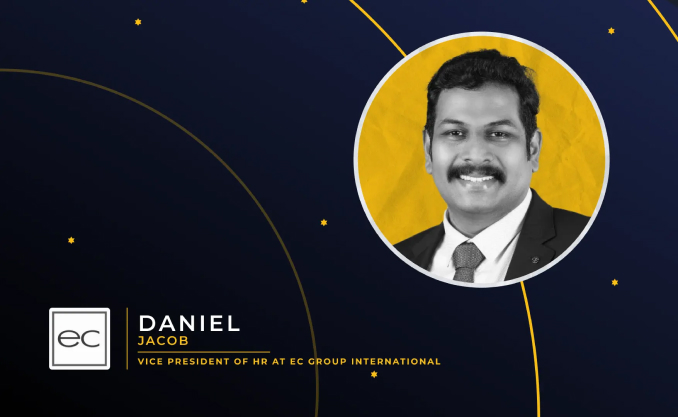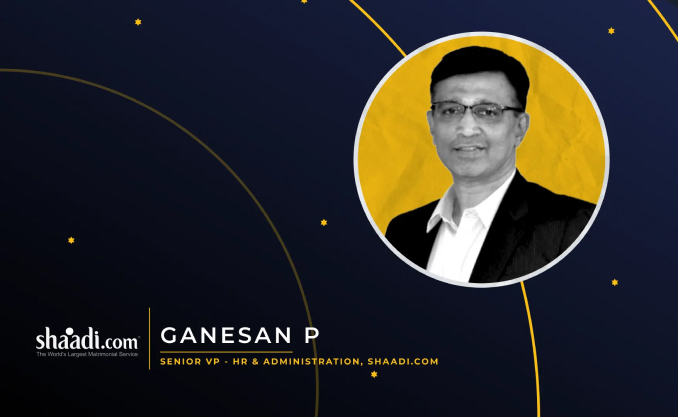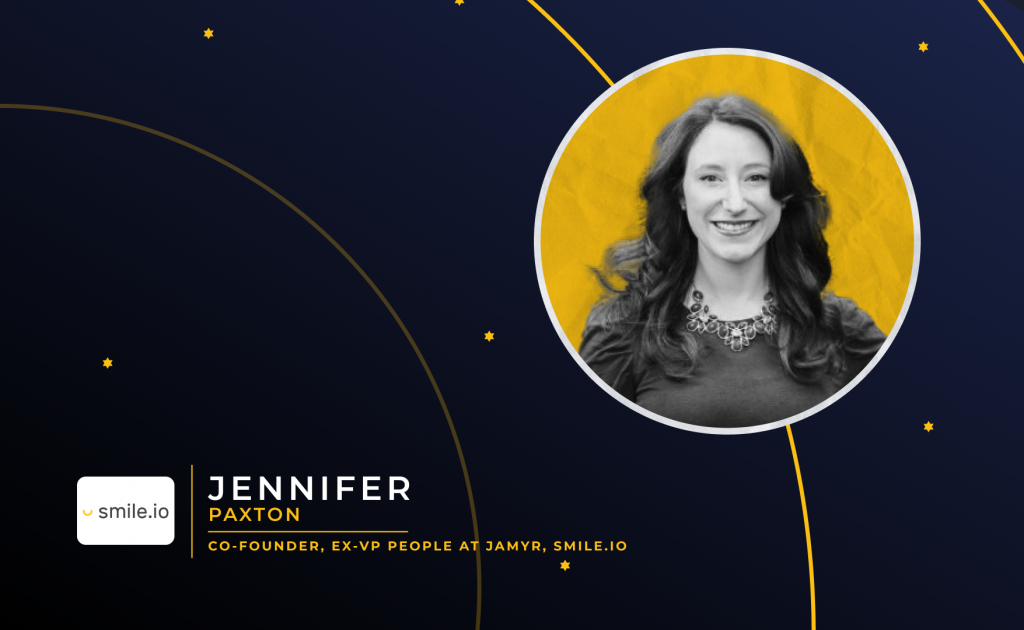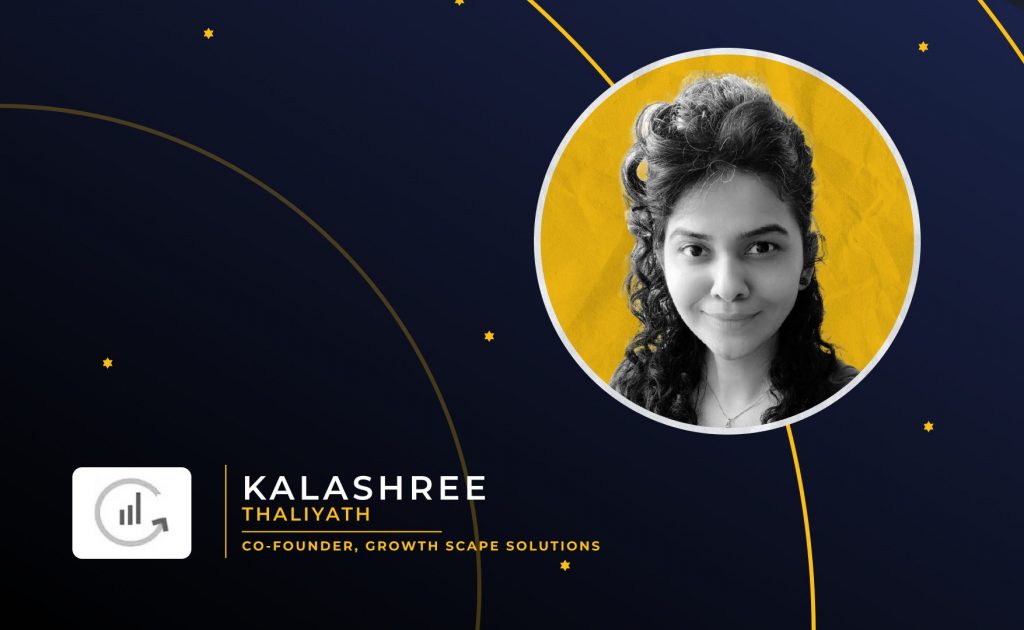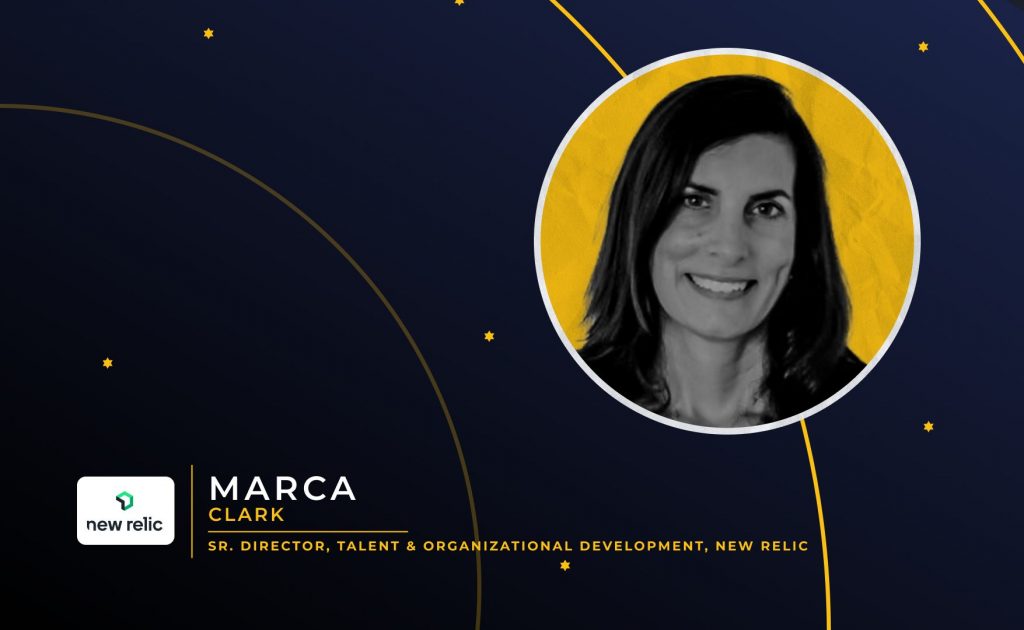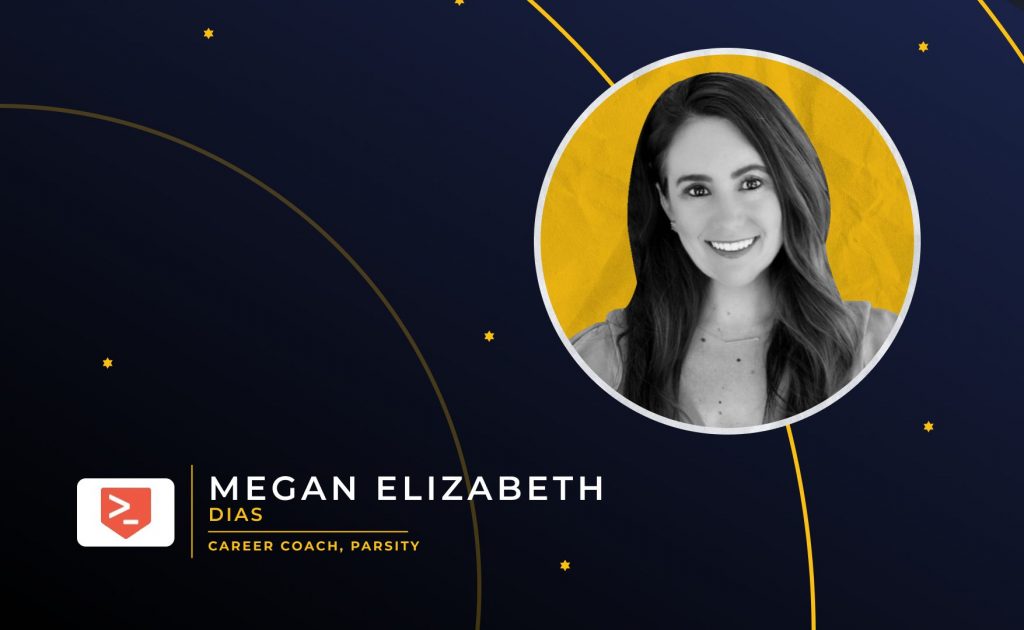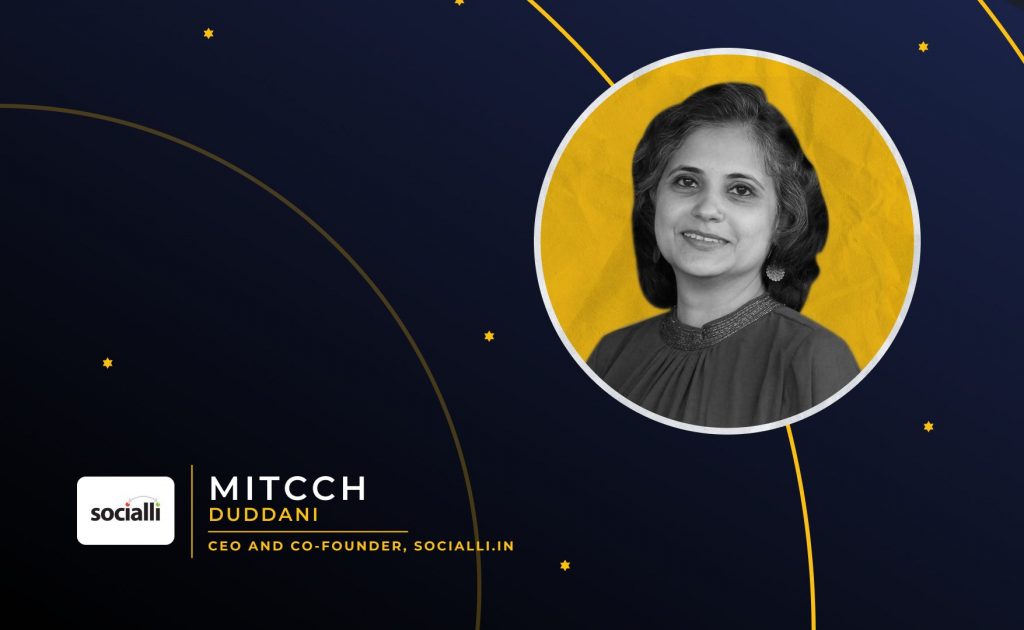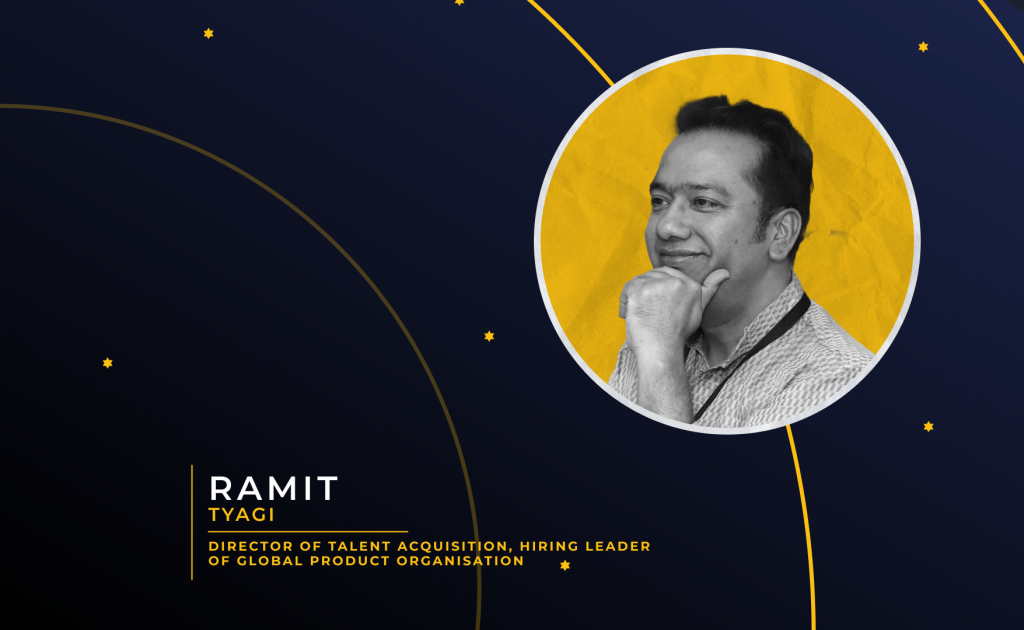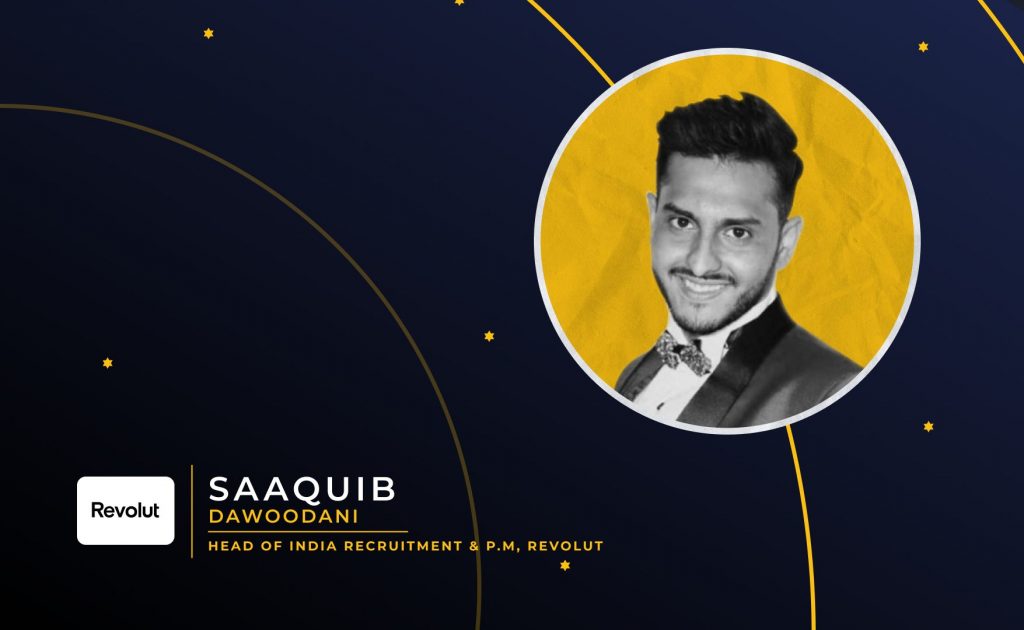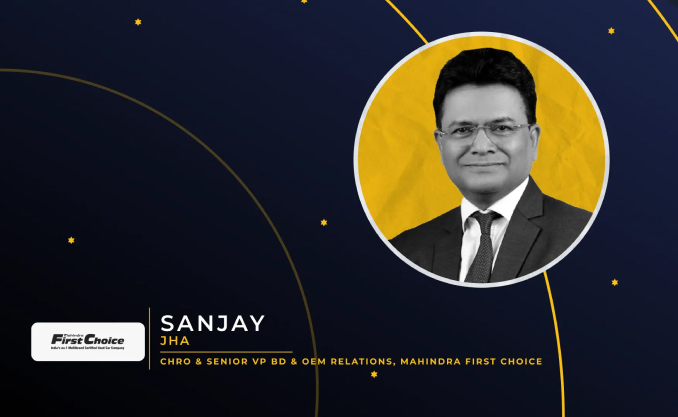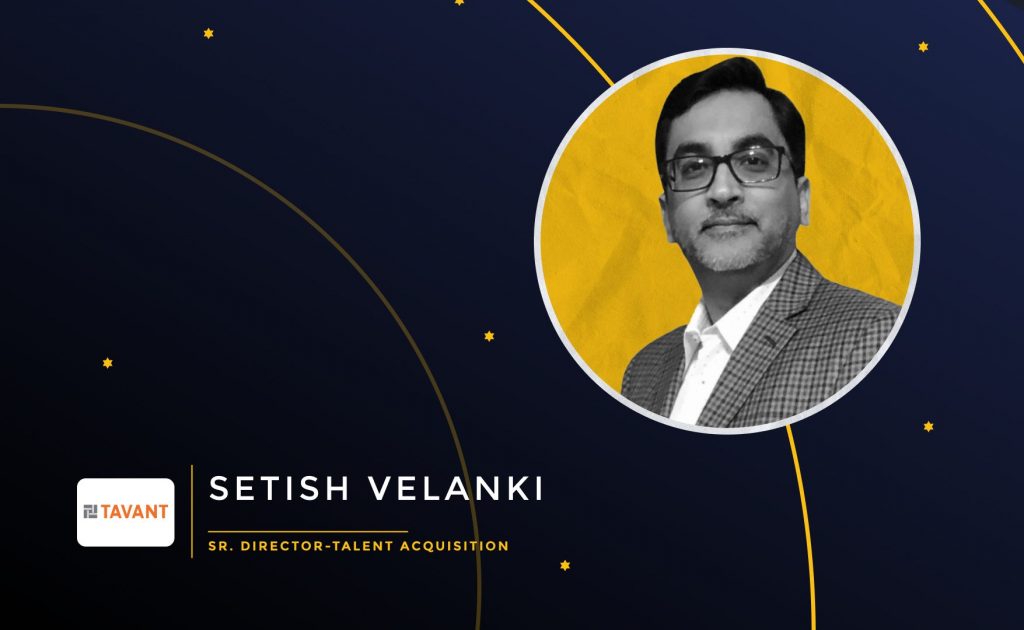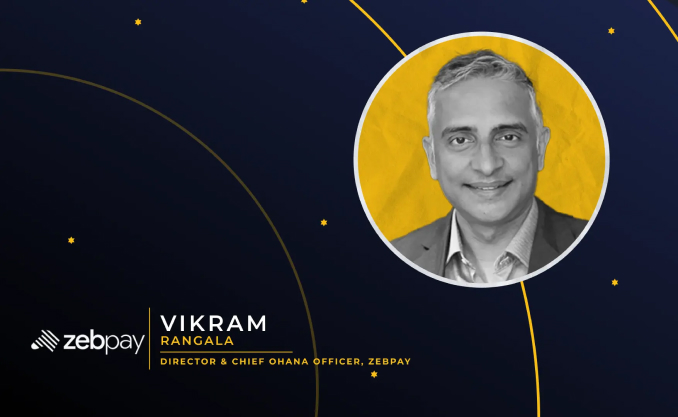Majid Ali Khan has about 19+ years of experience while working for companies like Mphasis, Aditya Birla Group, EDS, HP, Capita, Religare, and Tata group. Majid Ali Khan is also a COPC HPMT and Chrysalis HRD Certified HR professional in Talent Acquisition and Human Resources in Banking & Financial Services, Data & Analytics, IT, and ITES industry.
When asked about quality hiring and sourcing, Majid Ali Khan states, “There could be failures, but again the proportion of failures would be on the lower side. You can't always have a perfect solution for everything, but the idea should be to improvise and see how you can minimize the risk to the lowest possible level.”
Majid Ali Khan believes that “as a company, we focus on solving problems for our customers through solutions that we provide via data and analytics. When we understand what they want and work in the background to make it happen, I think it is a very beautiful journey that everybody covers together. So collaboration as a piece comes out naturally. ”
Table of contents
- About Majid Ali Khan
- Employee engagement and employee branding
- Hiring remotely and maintaining quality sourcing
- Rise of automated hiring solutions post-pandemic
- Involvement of customers in building a culture
- Challenges faced as an HR leader during early pandemic days
- Work-life balance
- The 3 most productive tools for daily tasks
- Usability of automated tools in hiring
- Advice to HR professionals
Hi Majid, could you just give us a brief about yourself and your journey so far as a prolific HR leader?
Hi, it’s great to be here. So, I’ve been in this industry for almost two decades now and I am currently associated with a very focused organization in the field of data science, data engineering, and analytics called as InfoCepts. Prior to InfoCepts, I was associated with various other companies like Mphasis, Aditya Birla Group, EDS, HP, Capita, Religare, and Tata group. In my current role, I am responsible to manage and head the talent acquisition function globally for this organization. That’s something that has always been an exciting role that I have played in my previous organizations as well. And I wish I work towards fulfilling all the needs of this organization and what they expect from me in my current role. So, yes, things are going so far, so good.
What is your take on employee engagement and employee branding and how do you think it has impacted hiring processes at the previous organizations that you have worked with and the current one?
Employee engagement and employee branding
So, it has been very simple for me, right, because I always carried a very clear-cut understanding in terms of what is that I should be doing to achieve my objectives and my goals, right?
Whatever I have been able to achieve in terms of fulfilling my wishes for my respective roles in different organizations has been around a fundamental understanding and approach of a model, which is a 3C model. And these 3C’s would stand for:
- Connect
- Communicate
- Convey and convert
When we connect with people, most things kind of get resolved, and that cannot happen without clear-cut communication, which is the second C. And the third C is about converting and conveying the right kind of message to people. So in our business, typically, what becomes very important for a function like ours is to find the right talent in the industry, engage with that talent, and that engagement happens through the right kind of communication. Communication will hover around the right demeanor, the right kind of language being used, the right kind of information getting passed, and various other things. And after that, the connection is established and the communication is built, which lays a very important foundation for the engagement to happen, then the conversion and the conveyance of the information kind of becomes very seamless.
Great resignation and quality sourcing
You must have heard about the great era of resignation, right? You must have also heard about how companies were struggling to convert an offered candidate to a joiner because one person typically had the potential of getting about four to five offers. So, this model of 3C really worked for me, right? And I’m happy to share that in my previous role, in the previous organization we were able to achieve an 85% offer-to-joining conversion ratio which was something very different from what the entire industry was kind of doing. And that could happen because of these three basic principles that we had applied in our day-to-day process. And that has been the mantra. It is all about doing the basics right and understanding how each and every human being requires a very customized approach from the fraternity that deals with them in terms of acquiring or attracting the talent or engaging with the talent.
How do you think recruiters while hiring remotely can maintain quality sourcing and ensure that their approach towards onboarding a certain candidate is smooth and transitional?
It has to again be a combination of multiple approaches. Let me now move away from the 3C model to the 3T model. And this 3T model is:
- About using technology
- Using the right kind of touchpoints
- Through technology and the right kind of touchpoints, building the right level of trust.
So some of these things have really helped us to use technology to identify the right kind of resources and manage assessments to understand what kind of skills and knowledge they carry. Again, use technology for the right kind of checks and balances to be in place, be it in terms of proctoring, be it in terms of checking whether the resources attempting those assessments are authentic in their approach or not. And again the text is all about connecting. So engaging with the resources, not really allowing things to happen on their own, but rather becoming a catalyst or a person who is going to facilitate the entire process.
At the same time not really doubting everybody because while this problem exists, some of these problems exist in certain pockets, right? These problems cannot really be generalized by saying that everybody is going to block the growth, you will have to have some level of trust prevailing in the entire process and move forward with a very positive mindset and approach.
But don’t forget the model of 3T, right, which is to use the technology in the right proportion to have your checks, balances, and controls in place. Use the right kind of touchpoints to ensure that you are able to connect with people and don’t really leave them lying in the lurch.
The third is about building trust. And once you build trust, I think we deal with the most prominent variable in the world, which is human beings. And there are different ways of doing things, so different people will have different approaches and you will have to accordingly customize your approach to build that trust. And when these things come together, I think you are going to achieve what you want to achieve.
They could be failures, but again the proportion of failures would be on the lower side. You can’t always have a perfect solution for everything, but the idea should be to improvise and see how you can minimize the risk to the lowest possible level.
Does InfoCept prefer any kind of automated hiring solutions or you have been using anything lately because recruitment automation is on the rise, especially post-pandemic? What is your thought on it?
Automated hiring solutions
We do have an ATS. We are improvising upon some of our processes and trying to revamp the process for the good. At the same time, we have got assessments that are based on simulation, based on AI, and all automated. So some of these things definitely become the most important ingredients for you to function in this hybrid world. Because it’s not completely physical, neither it is completely virtual today.
Understanding the need of the hour, we need to have solutions that are suitable to the prevailing times.
One of the things that we carry as a motto is to help the world stay modern, and help the business stay modern with our customers and with our clients.
When we do some of these things for the larger world, how can we forget our own organization in terms of staying relevant, modern, and contemporary? Hence the answer to your question is definitely a yes.
And certain things that I spoke about in terms of having a full-fledged ATS which will manage your process throughout the recruitment lifecycle, you will have assessments that are automated again based on AI and simulation. Some of these things have been really helpful to help us in operations-related matters during this pre-pandemic as well as post-pandemic era.
How do you involve customers in building culture? How do an organization's hiring process and work culture add value to customers?
Organization’s hiring process adding value to customers
One of the values that we uphold is that this world is running because of people.
You are an individual; I am an individual. People managing organizations at different levels, including the CXO levels, are all individuals. Your customer is an individual. Their customers are also individuals. So we are operating in a world that is full of people and every business is a people’s business. While that happens to be a reality, something which is also very important is that each and every business will have a purpose. And that purpose is clearly defined through the right kind of work ethic, the right kind of value system, and the right kind of cultural quotient. And it cannot happen without collaboration. So collaboration is what works for us. For any business to be successful, it is very important for people who are managing those businesses in different capacities to kind of understand what the customers want.
We as a company believe in solving problems for our customers through solutions that we provide via data and analytics. When we understand what they want and work in the background to make it happen, I think it is a very beautiful journey that everybody covers together. So collaboration as a piece comes out naturally. And that is where I think we are able to kind of gel along well with the internal ecosystem as well as our customer ecosystem.
What are some of the challenges that you faced as an HR leader during the early days of the pandemic?
Challenges faced as HR leader during early pandemic days
While we believe in staying relevant, and staying contemporary with the prevailing times of the industry, it is also about preparing yourself for the future. So if you happen to be a forward-leaning person or if you happen to be a forward-leaning department or function or an organization, you will always look at how business continuity can be kept in mind. Systems and processes and policies are built around business continuity because you will always have something or the other happening which you must not really have expected to happen.
This pandemic was unprecedented. So during that time, personally, when I looked at our processes, we found our processes to be forward linear, although there was some level of restlessness that came into play for an initial day or two.
However, from day three, and day four onwards, we were all up and running in terms of our productivity levels. That could happen because automation was there, that could happen because remote solutions were there, that could happen because organizations had policies around working from home, et cetera.
So if you have an ecosystem that includes ATS, HRMS, processes, policies, procedures, solutions related to virtualization, etc, and then obviously certain controls and checks in place, keeping in mind the risk-related factors, then I think some of these things become simpler and easier.
And we were fortunate to have some of those arrangements back then and things could come back to normal, at least in terms of productivity.
It wasn’t normal for the larger world because when you have so much of a loss happening and loss of life happening across the globe, you can’t really call it a normal situation. But if you talk about the work, right, obviously we were able to get back to normal ways, at least in terms of productivity, within three or four days. But the challenges were obviously about managing people, bringing in the right kind of trust, ensuring that the engagement takes place and I think that conscious effort towards ensuring that in this virtual world engagement would have to solve that.
A lot of groups got formed on MS teams, WhatsApp, and various other platforms. A lot of meetings and calls started happening remotely. People who were earlier shy in terms of appearing on camera started ensuring that they are dressed up and ready the way possibly would go to the office, even at their homes.
Obviously, there were some people who used to be still trying to stay in their comfort zone. But I think the engagement levels got better. And that’s why even today if you look at the overall ecosystem of the industry, people are far more comfortable working virtually than actually coming to the office. There are organizations where people have even shown a desire to step down if they are being forced to come to the office. So I think challenges were around engagement, challenges were around trust. And we have to work towards solving some of those challenges by taking a very conscious effort to ensure that engagement and trust are taken care of.
Do you personally prefer a hybrid model or a work-from-home model?
If you ask me honestly today, the work can happen from anywhere because all of us are equipped to do that. But I still believe that we should come to the office to collaborate. We should come to the office to celebrate.
My motto would be to work from anywhere but celebrate and collaborate in the office.
Speaking of work-life balance and working from home or a hybrid model of work, what are some of the things that you do to reboot or re-energize yourself whenever you step away from your work and then you take a weekend off and then you come back and re-energize?
Work-life balance
There are many talented leaders who carry a very high level of energy. And that cannot happen unless you balance. The world talks about work-life balance. I look at it in a little different way.
I say life and work balance because only when you are alive is when you will be able to work. And for you to stay alive, there are certain ingredients. Ingredients could be your basic necessities.
And along with those basic necessities, you also need a lot of care, affection, and connection; for that, you need to have the right kind of work ethic and work regime. If you are not able to prioritize your daily routine affairs, you will struggle. And you will always have a problem around be it work-life balance, the way the world looks at it, or life-work balance, the way I look at it.
So prioritizing things helps, and managing time helps, right? And all of these things are linked steps in the process of management, which is planning. If you plan well, maybe 90% of the things would fall into place. Obviously, there would always be a situation where you will encounter something which you must not have anticipated, right? Those are variables. But a lot of other things can be timed well, can be planned well. And if you are able to manage your time well, if you are able to manage your work regime and work ethics well, I think you will have a great life-work balance. And a good work-life balance.
What are the three most productive tools that you use, whether it's to manage your time or your work or your projects, because being a leader, you're expected to don different hats, and manage different roles and disciplines?
3 most productive tools
At workplaces, you definitely have an ecosystem in terms of tools and technologies. Today we are using zoom for this particular meeting. Similarly, you will have various other workplaces using Webex or MS teams, etc. Some of these things are linked to your mailboxes. And your mailboxes will always have a calendar that would talk about your schedule. And if you look at business processes within delivery functions, they’ve got their own set of applications and systems, right? Some might use CMS, CRM, Uncanny, and many more. So, there is definitely no dearth of such solutions.
Actually, there’s a plethora of tools and technologies which are available today. It is only about the usability factor. How friendly are those when it comes to user experience or user interface?
So, UI and UX play a very important role. At the same time, knowledge and education about using some of these platforms become imperative. Organizations, if they bring in solutions, it is also very important that they communicate it to a larger audience in terms of the know-how of how these tools and applications, and systems can be used to the right potential level, which helps in managing everything. And then, if people are technologically challenged, definitely be it time management, or schedule management, life will become difficult.
The reason why we could survive during this pandemic and we could still get our necessities delivered at home was because most businesses had become digital businesses or technology-enabled businesses. Even today, if you go to a pawn shop, which is something you will find near a tiny housing complex or any shopping complex or restaurant, even at these places, the mode of payment in most cases would be digital. They will have a scanner, and you will have to make the payment through the scanner. So, technology is everywhere today. We can’t say that any business is without the usage of technology. In some or other proportions, it is prevalent. It is all about how people use it. And that’s where the differentiator kind of comes into play.
But talking about the usability of technology, you have mentioned that automating hiring processes has been an integral part of integrity and the previous organizations we work with. But do you feel like especially in processes like screening or interviewing, those tools or those platforms have been really helpful for you, or do you see loopholes with them currently?
Take on screening and interviewing tools
Those have been really helpful. And it is again not restricted to one organization. It is something that is available at various other places. Also, it definitely aids. Assessment-related tools and systems help you to reduce the size of the overall applications which are coming your way from different sources to a size that is manageable. The idea is to select from there rather than, you know rejecting candidates. So what it does is that one, it helps you to maintain a certain level of quality. Everybody understands the language of data. And if you have data-related facts available, judgment or decision-making becomes easier. So these tools and platforms definitely give you enough data points.
Second, it is helpful in a situation like today where you manage a lot of things remotely and virtually and you save time.
Let me give you a very classic example. Today, if you think of campus hiring, which is a high-volume game, because, on one particular campus, you might come across thousands of students, right? Today there are solutions that actually enable you to only look at a pre-assessed set of candidates. Which saves a lot of time, energy, and effort, right? And as they say, time is money. So it also saves money for that matter. If you ask me personally, I believe that each dollar saved is like a dollar earned. And every organization today in the industry is there for growth and profits, which they pass on to their employees and to the larger society as a whole. Because if the company is able to sustain and grow, its employees will also have a job.
And every person who has a job brings security to the rest of the people back home who are dependent. So if one organization has got, let’s say 2000 people and all those 2000 people have got four dependents for example at home, you can multiply 2000 by four and then you will realize that one organization actually is taking care of 8000 people. So some of these things are all put together to become a beautiful arrangement and that is what helps any system, any organization across different industries, different sectors, different domains, etc.
One piece of advice that you would want to give HR professionals.
Advice to HR professionals
HR stands for human resources.
And that element of being human or humane has to always be kept in mind while using technology or policies or procedures, not for anything else, but for one very fundamental role that they have to play, which is to improve lives.
Be it an HR professional who’s performing the role of a talent acquisition person, or an HR professional who’s playing the role of a talent management person.
What they do in their respective roles is to improve lives. When you offer a job to somebody, you actually take care of that individual and the dependents back home. And that definitely improves lives. When you ensure that your people are taken care of at the workplace and beyond, you again improve lives. And this pandemic has been a classic example. Most of the organizations went beyond their call of duty to ensure that their people are safe and that their people get vaccinated. Why did that happen? That happened because there was a great amount of care was prevailing. So, my advice, to sum it up, would be to carry this thought process of being there in this role to improve lives.

